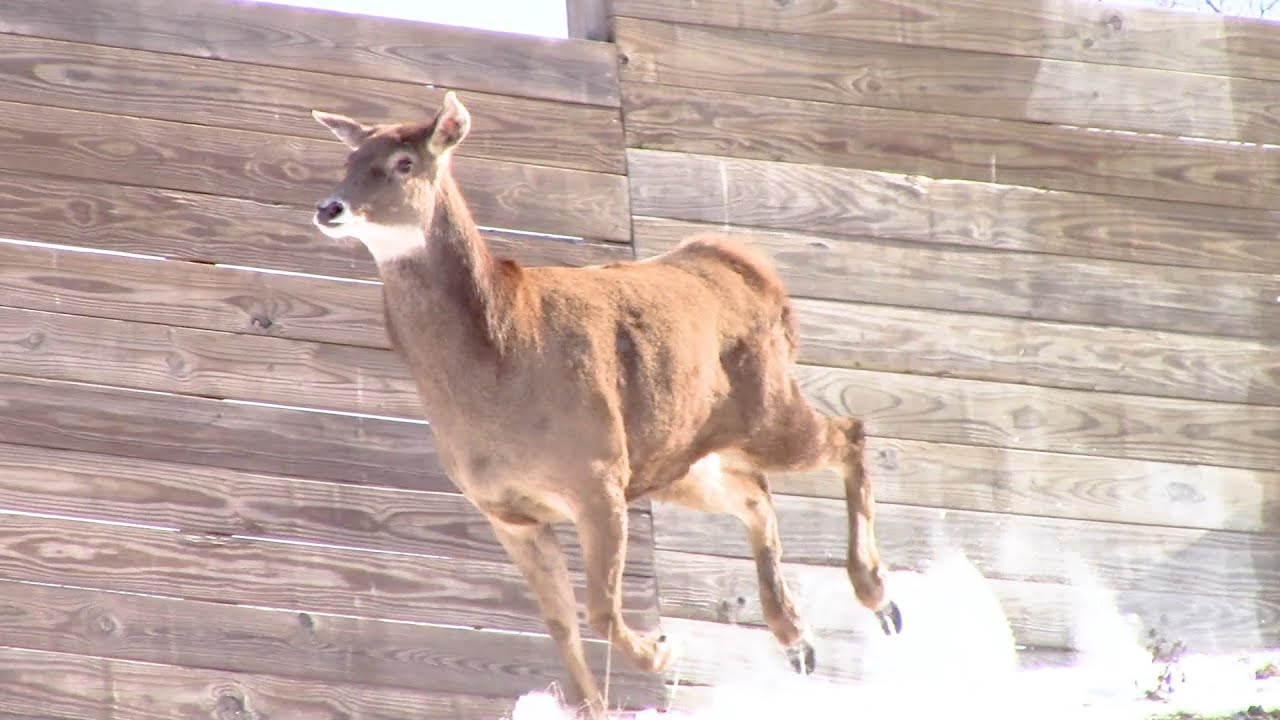– Discover the intriguing behaviors of Thorold’s white-lipped deer, particularly their “zoomies” in snowy habitats.
– Understand the importance of rest for these majestic creatures amidst their active lifestyle.
– Explore their dietary habits and snacks’ crucial role in nourishment.
– Learn about the role of mud baths in maintaining the health and hygiene of these graceful deer.
—
The first snow of the season blankets the earth, bringing a magical transformation to the landscape. This enchanting scene is a backdrop to an equally captivating spectacle — the exuberant display of energy known as “zoomies” exhibited by Thorold’s white-lipped deer. These gentle creatures, hailing from the heights of the Tibetan Plateau, become the embodiment of joy as they spontaneously sprint and frolic around their snowy environment.
These delightful high-energy bouts are often followed by a stark contrast — the serene image of the same deer surrendering to slumber, their eyelids heavy and their breaths deep and steady. In these moments of respite, they recharge, ready to embark upon the next burst of spirited activity.
This cycle of zestful play and tranquil rest is punctuated by nourishment. Consuming their choice snacks, the deer delicately forage for the preferred shoots and leaves, providing them with energy and vital nutrients to support their health and vitality in the harsh alpine climates they inhabit.
Amidst this haven of snow and snacks, another essential ritual emerges the mud bath. An often overlooked yet crucial aspect of deer life, the mud bath serves various purposes, from cooling and skin care to parasite prevention. Observing this practice gives a glimpse into these magnificent creatures’ intricate and self-sufficient world.
*The Joyous Jamboree of Zoomies*
Nothing is quite as heartwarming as witnessing the spontaneous expression of pure happiness. In the case of Thorold’s white-lipped deer, this joy is encapsulated in the phenomenon lovingly referred to as the “zoomies.” When these deer burst into sudden sprints, leaping and twisting in the air, it’s as if an invisible conductor has cued them into a symphony of motion.
What triggers these energetic spurts? While the causes remain a delightful mystery, some suggest that zoomies allow the deer to release excess energy, engage in playful behavior that promotes social bonds, or even revel in the feeling of their powerful muscles propelling them through space. Observers can’t help but be swept up in the infectious energy.
*The Sacred Slumber*
But as every burst of vitality inevitably wanes, so too do the white-lipped deer need their moments of repose. As the golden hues of dusk start painting the snow-capped mountains, one spectacle nears its end while another begins — the restful slumber of these alpine dancers.
Sleep is not merely a pause in activity; it is a fundamental necessity that allows the deer to process their experiences, heal, and grow. The delicate nature of their repose, with closed eyes and softened expressions, evokes peacefulness that belies the ruggedness of their everyday existence. It’s a reminder to all who watch that even the most vigorous of creatures need their moments of vulnerability and quiet.
*The Delight of Dining*
As the white-lipped deer wake from their serene slumber, their focus shifts to the next vital task: eating. In the wild, these deer are browsers and grazers, displaying a preference for specific plants and shoots that sustain them throughout the year. Their snacking is not mindless munching but a deliberate choice driven by biological needs and environmental availability.
In managed environments like zoos, these deer are provided with high-quality forage and special deer pellets that mimic their natural diet, ensuring they receive all the necessary nutrients to maintain their health and well-being. Seeing these graceful animals carefully selecting their food is a subtle reminder of the complex relationship between wildlife and their habitat.
*Mud Baths: A Muddy Marvel*
On a particularly warm day or after a fulfilling meal, the white-lipped deer may indulge in a peculiar pastime – the mud bath. This may seem like an unusual behavior for such pristine-looking animals, but this earthy spa treatment offers significant benefits.
Covering themselves in mud can be a natural bug repellent and sunblock, protecting the deer’s skin from pests and harmful UV rays. The drying mud also helps to remove loose fur and provides a form of temperature regulation. This surprisingly pragmatic practice showcases the savvy survival instincts of these creatures.
*In Conclusion: The Graceful Gestalt of Deer Life*
Capturing just one aspect of the white-lipped deer’s existence does not do justice to their full majesty. By embracing their liveliness, understanding their need for rest, valuing their dietary habits, and appreciating the utility of their self-care rituals, we gain a holistic insight into their unique and fascinating lives.
The whitewashed scenes amid which these animals display their behaviors offer more than mere beauty — they tell the story of resilience and elegance in the face of nature’s challenges. Observing the white-lipped deer in action can teach us valuable lessons about harmony with our environment, balance, and the inherent joy in existence.
Whether you are an enthusiast observing from afar or a lucky visitor witnessing these creatures firsthand, the white-lipped deer’s presence is a treasure trove for the mind and soul. Their world is intricate symbiosis, continuous adaptation, and simple pleasure. To reflect on these elements is to celebrate the white-lipped deer and the natural wonders surrounding us all.
*****
Source Description
Just girly things: having the zoomies, getting sleepy, eating a snack, and having a mud bath. 🥰
Our Thorold’s white-lipped deer girls are enjoying the sun and the snow! Native to the alpine regions and forested mountains of the Tibetan Plateau, these deer produce a clicking sound with their hooves when they walk, which helps the herd locate each other during heavy snowfall.
#WhiteLippedDeer #Syracusezoo #Syracuse #CNY #OnondagaCounty #OnondagaCountyParks #JustGirlyThings

